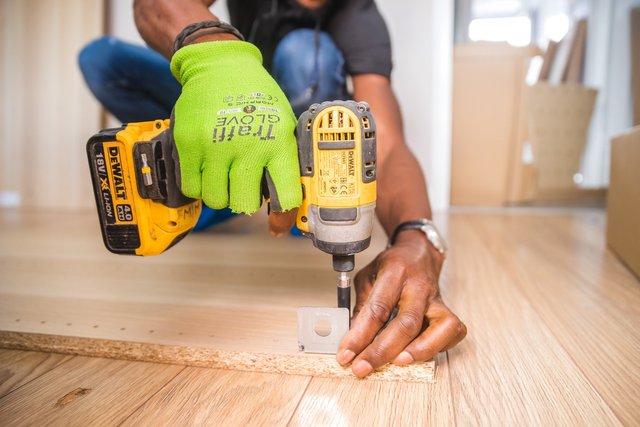
Choosing the right power tool for your requirements may be a difficult task, but it's one that is well worth your time and effort. Using the incorrect power tool may be a demoralizing and unsatisfactory experience; spare yourself some misery by following these simple steps to identify the correct equipment for you:
• The first, and possibly most critical, step is to figure out how much and what kind of usage you have. Household maintenance needs a completely different set of instruments than industrial undertakings. Of course, you could use industrial-grade tools to tighten your cabinets and door jambs, but this isn't always feasible, and using sub-par power equipment on a professional project is never a smart idea. You'll want to make sure you have the greatest power tools for the jobs you'll be doing with them; for example, you wouldn't use a steak knife to spread butter on toast or a butter knife to slice into a top sirloin. If you just use your circular saw, power drill, or other power tools a few times a year, the most powerful tools on the market aren't essential; but, if you use your equipment frequently and extensively, you'll definitely want to spend a few extra dollars on a higher-quality tool.
• You might also think about the manufacturer. Certain artisans are brand loyalists, and some brands are unquestionably superior to others (this difference usually reflects in pricing). Favoring one or more manufacturers above others might help you narrow down and simplify your search. Furthermore, manufacturers, like other artisans, have a specialty. Milwaukee, for example, is recognized for making some of the greatest reciprocating saws, while Bosch is recognized for making the greatest jigsaws. With a little study, you can typically find the mastermind behind each sort of power tool.
• Make a budget and do some research. Spending too much or too little while looking for the greatest power tool is a typical blunder, and it's an easy one to make; if you have a budget in mind, you'll be much more likely to stay to it. It's crucial to note, though, that low-cost and high-cost power tools are both low-cost and high-cost for a reason. In the tool industry, the adage "you get what you pay for" is likely most apt.
• Determine if you require a tool kit or whether you simply require a single tool. Kits including the most often-used power tools, such as a drill, impact driver, and reciprocating saw, are regularly offered. This is clearly a more expensive investment than purchasing a drill alone, but if you require these other power tools, purchasing them, as a package is far more cost-effective than purchasing them separately. If you prefer cordless equipment, this is also beneficial because you can generally change batteries between different and many instruments if you buy various cordless tools from the same brand.
• Determine whether you prefer cordless or corded power. Before making this difference, it's important to understand the limits and benefits of both forms of power: corded power offers a consistent power supply and removes the hassle of dealing with charges and batteries; it's also more powerful and lightweight. They are, however, linked to a wall, limiting their mobility, functionality, and power usage when using extension cables. Cordless tools, on the other hand, can travel wherever you want to go, and with ever-improving battery technology, they're a strong, dependable source of portable power that doesn't require a hanging wire.
• Warranties on tools are frequently overlooked. Having a solid warranty on your tool typically implies you're buying from a firm that is completely confident in their product's ability to meet your needs - which is a pleasant feeling to have on the job. On corded power tools, batteries, and chargers, most industrial manufacturers provide a one-year guarantee, whereas cordless products come with a three-year guarantee. Of all, this is only the baseline; some manufacturers provide far less, while others provide far more. The majority of Hitachi's cordless lithium-ion products come with a ten-year warranty.
• Finally, if you have the opportunity, try out the tool before purchasing it. Simply feeling the instrument in your hands to check comfort and functionality is a solid indicator of whether or not it is a suitable match. Some manufacturers additionally include an (about 30 day) Satisfaction Guarantee, which allows you to use the product once or twice before deciding whether or not you're completely satisfied with your purchase.
Ultimately, all it takes is a few simple steps to select the greatest power tool. For getting more information, please visit toolsdoctor.com. Meanwhile, best of luck and happy-making.